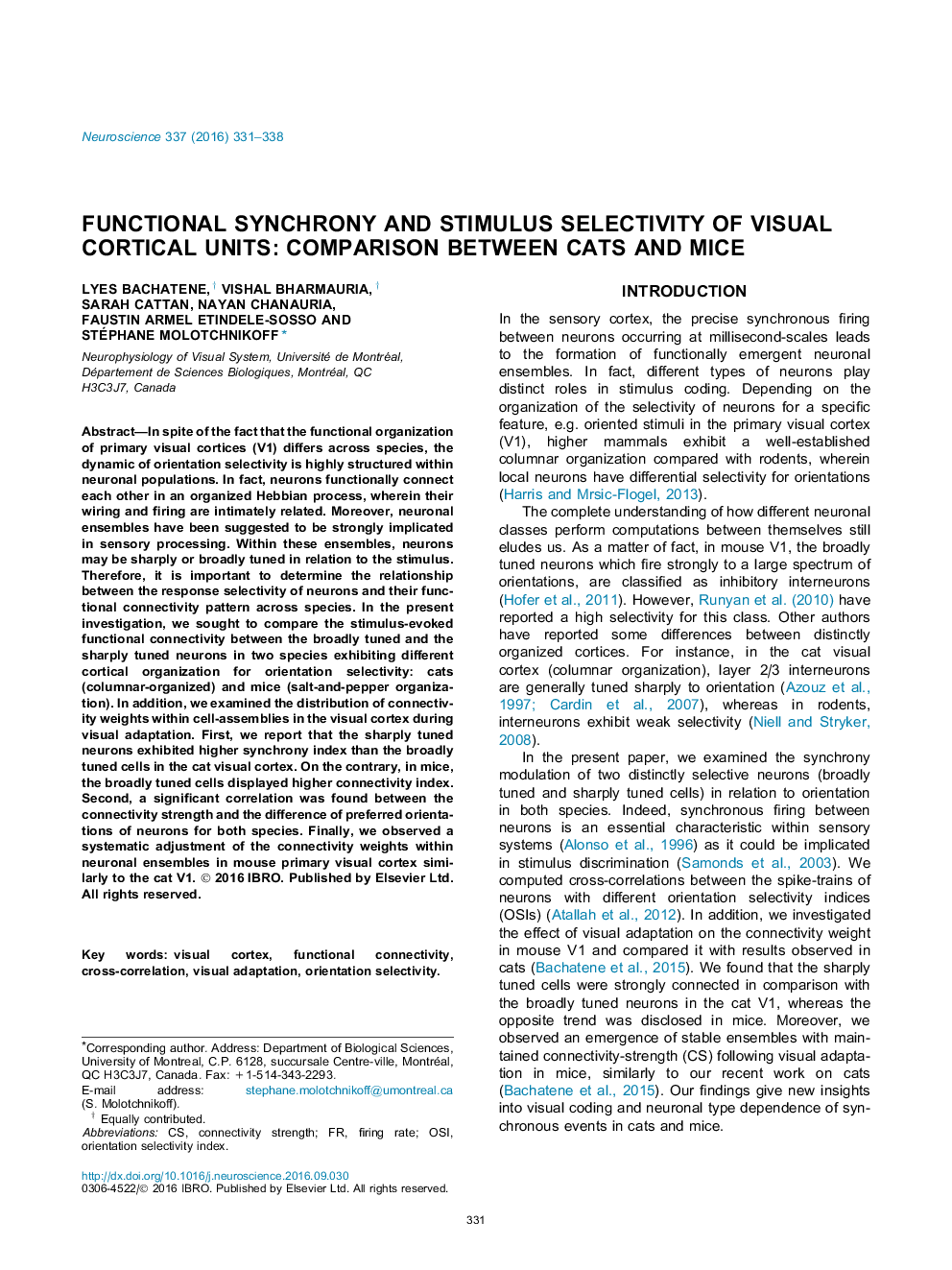| Article ID | Journal | Published Year | Pages | File Type |
|---|---|---|---|---|
| 6270756 | Neuroscience | 2016 | 8 Pages |
â¢Broadly tuned neurons to orientation exhibit higher connectivity in mouse V1.â¢Narrowly tuned neurons are more functionally connected in cats' V1.â¢The total connectivity weight is maintained in a homeostatic manner following plasticity.
In spite of the fact that the functional organization of primary visual cortices (V1) differs across species, the dynamic of orientation selectivity is highly structured within neuronal populations. In fact, neurons functionally connect each other in an organized Hebbian process, wherein their wiring and firing are intimately related. Moreover, neuronal ensembles have been suggested to be strongly implicated in sensory processing. Within these ensembles, neurons may be sharply or broadly tuned in relation to the stimulus. Therefore, it is important to determine the relationship between the response selectivity of neurons and their functional connectivity pattern across species. In the present investigation, we sought to compare the stimulus-evoked functional connectivity between the broadly tuned and the sharply tuned neurons in two species exhibiting different cortical organization for orientation selectivity: cats (columnar-organized) and mice (salt-and-pepper organization). In addition, we examined the distribution of connectivity weights within cell-assemblies in the visual cortex during visual adaptation. First, we report that the sharply tuned neurons exhibited higher synchrony index than the broadly tuned cells in the cat visual cortex. On the contrary, in mice, the broadly tuned cells displayed higher connectivity index. Second, a significant correlation was found between the connectivity strength and the difference of preferred orientations of neurons for both species. Finally, we observed a systematic adjustment of the connectivity weights within neuronal ensembles in mouse primary visual cortex similarly to the cat V1.
Graphical abstractDownload high-res image (109KB)Download full-size image
